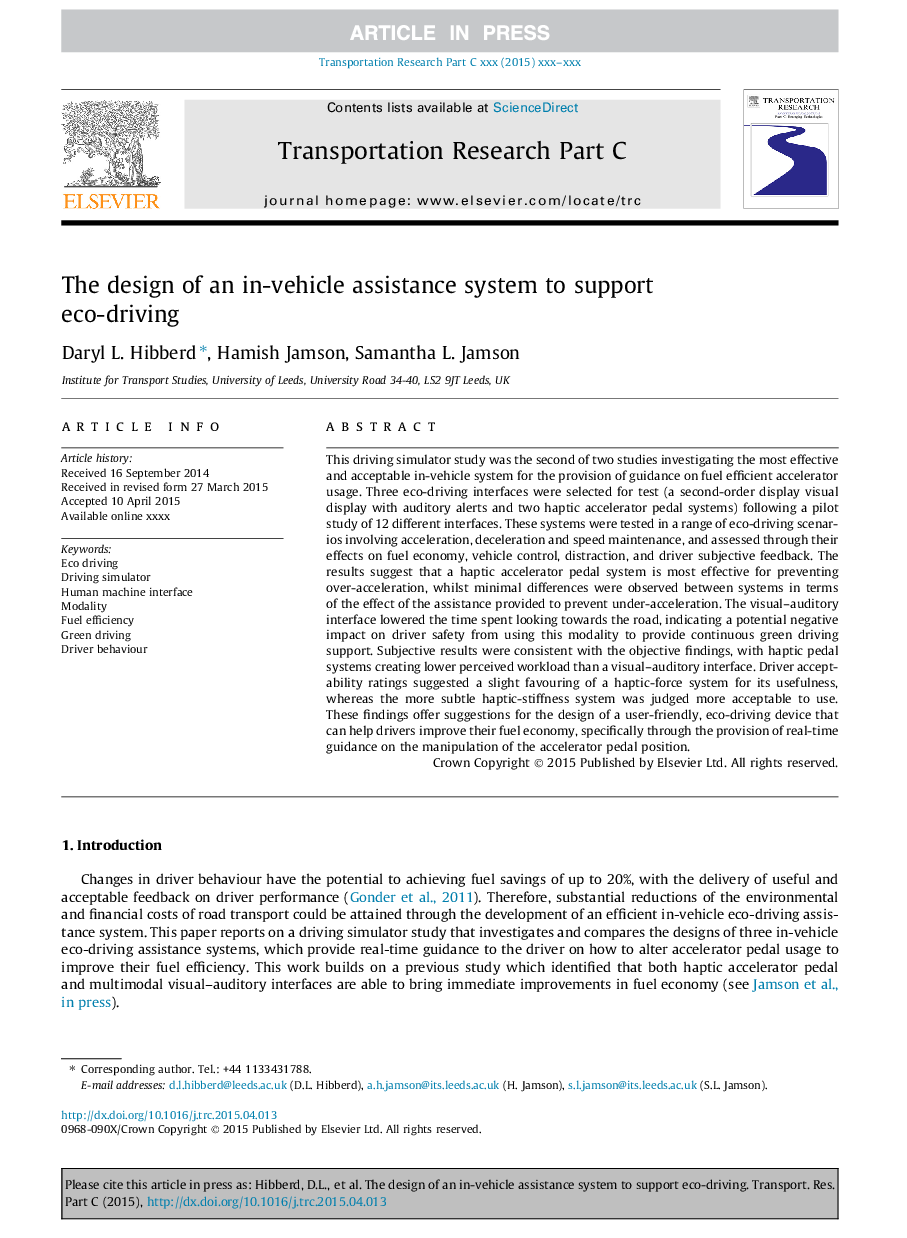| Article ID | Journal | Published Year | Pages | File Type |
|---|---|---|---|---|
| 10359033 | Transportation Research Part C: Emerging Technologies | 2015 | 17 Pages |
Abstract
This driving simulator study was the second of two studies investigating the most effective and acceptable in-vehicle system for the provision of guidance on fuel efficient accelerator usage. Three eco-driving interfaces were selected for test (a second-order display visual display with auditory alerts and two haptic accelerator pedal systems) following a pilot study of 12 different interfaces. These systems were tested in a range of eco-driving scenarios involving acceleration, deceleration and speed maintenance, and assessed through their effects on fuel economy, vehicle control, distraction, and driver subjective feedback. The results suggest that a haptic accelerator pedal system is most effective for preventing over-acceleration, whilst minimal differences were observed between systems in terms of the effect of the assistance provided to prevent under-acceleration. The visual-auditory interface lowered the time spent looking towards the road, indicating a potential negative impact on driver safety from using this modality to provide continuous green driving support. Subjective results were consistent with the objective findings, with haptic pedal systems creating lower perceived workload than a visual-auditory interface. Driver acceptability ratings suggested a slight favouring of a haptic-force system for its usefulness, whereas the more subtle haptic-stiffness system was judged more acceptable to use. These findings offer suggestions for the design of a user-friendly, eco-driving device that can help drivers improve their fuel economy, specifically through the provision of real-time guidance on the manipulation of the accelerator pedal position.
Keywords
Related Topics
Physical Sciences and Engineering
Computer Science
Computer Science Applications
Authors
D.L. Hibberd, A.H. Jamson, S.L. Jamson,
